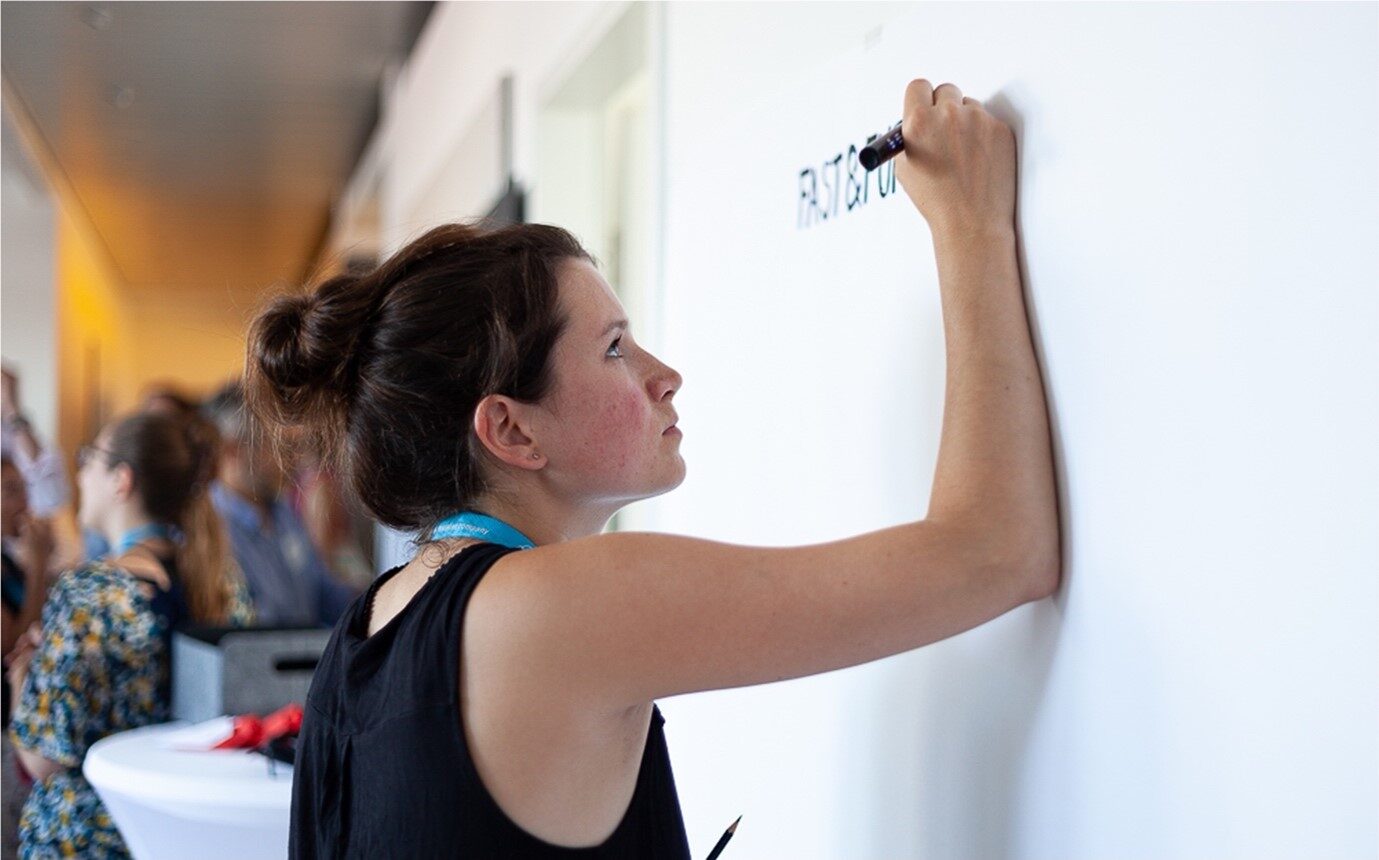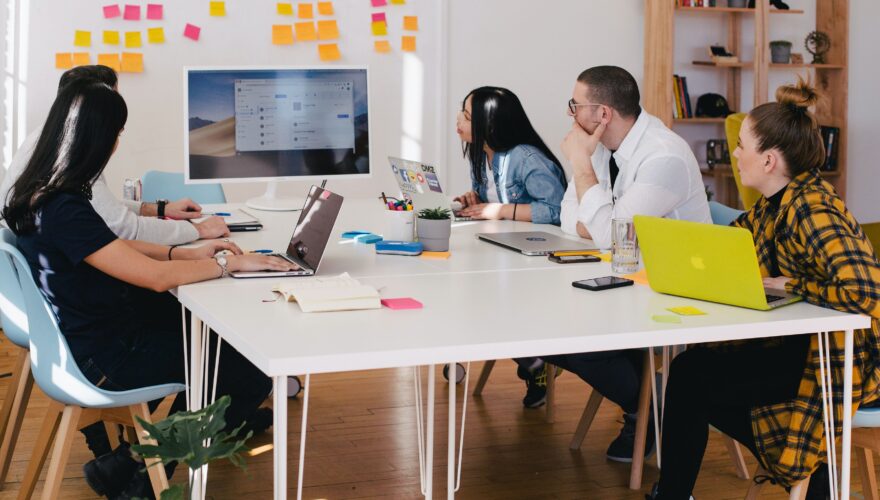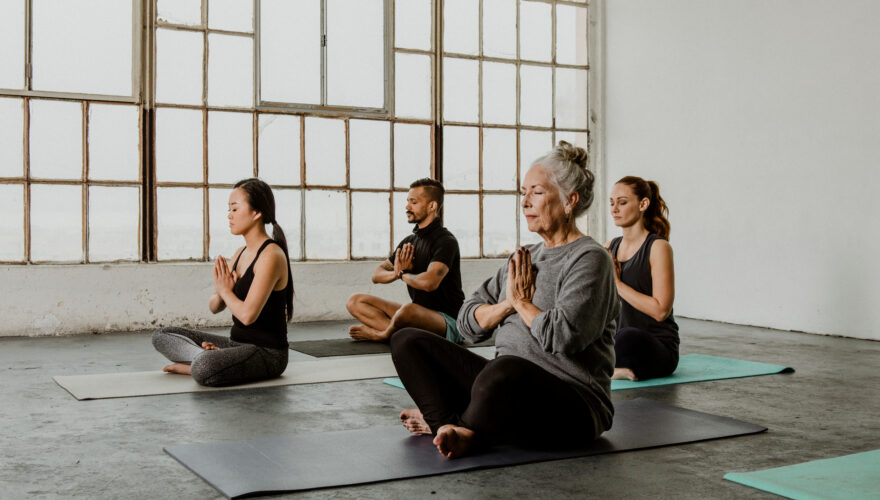The challenge
Who hasn’t experienced this: You listen to an exciting presentation, but after a while, your attention wanes. The discussions in a workshop go around in circles because the participants have different opinions and talk past each other. Finally, after an intensive day at the event, your head still smoking from creative thought processes and new information. A few months later, however, you realize that the topics discussed, which were so important, have not been pursued at all, or have even been completely lost sight of.
Visual Recording – the all-rounder
In the visual recording, an illustrator translates discussions, presentation content, interactions, and processes into a graphic overall picture consisting of concise headlines, and to-the-point visualizations, enriched with concise texts. Complex content is clustered and structured according to key topics. The result is multi-layered documentation that can be quickly grasped visually as an overall view of an event that lasts several hours.
Our visual recorders at HYVE use this method for shorter formats, such as lectures or webinars, as well as for longer creative sessions with a lot of interaction, such as co-creation and ideation workshops, and strategy meetings.
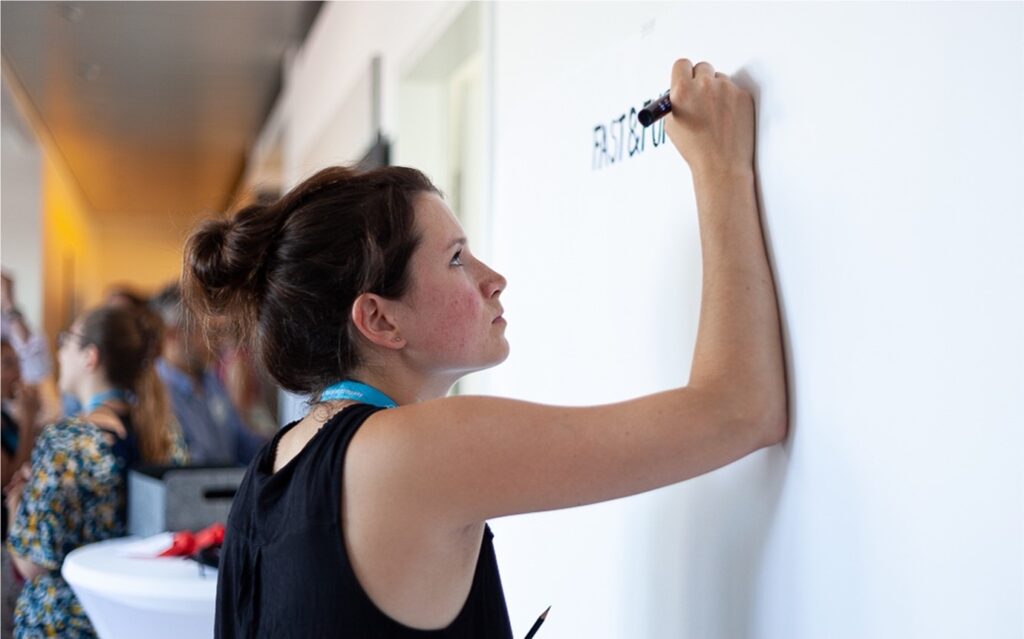
In action
During the event, the image created by Visual Recording can provide orientation for all participants as a visual anchor point. For example, we like to make short summaries after breaks in a workshop, with the visual recorder leading through the images. This way, the whole group, quickly gets back into workshop mode and can smoothly start another creative phase.
After the event, the output from the Visual Recording is tangible documentation at a glance. The workshop content can be presented clearly and reminds you of the goals you have set.
The look behind the scenes
Visual recording usually ends with a complete image, but this method involves much more than just active recording during an event.
In preparation, our visual designers familiarize themselves with the topic in advance, immerse themselves mentally in the theme world, and create color concepts and a rough composition of the overall image.
This makes it easier for them to translate ideas and concepts directly into images later on. They also select the right material: Poster-sized paper or many smaller drawing areas, matching markers, or the appropriate digital media, with iPad or Graphictablet – depending on the event, the right setup is chosen. The illustrators can be present on-site, or they can be remotely connected via video call.
Then comes the hot phase, the session itself, in which the actual content is created: While the participants can fully concentrate on the event, the illustrators really get going. The (digital or analog) pens must be ready to capture all impressions quickly!
A visual recording – as individual as your event
In the case of a presentation, the key statements are shown graphically and can also be put into a thematic context and clustered. This is how the image for the webinar on Future Foresight summarizes what this method is about and what it can be used for.
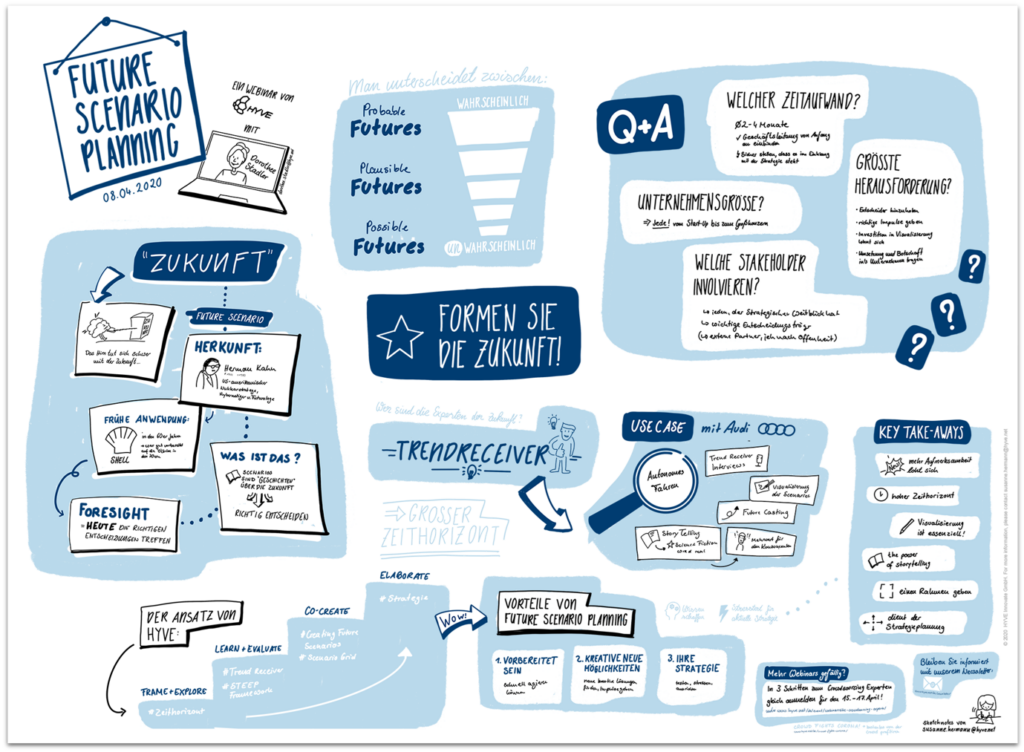
When multiple presenters and speakers are involved, as in an ideation session or roundtable format, the different perspectives are visualized and linked or compared. The visual HYVE’s Sustainable Transformers Talk shows exemplarily and vividly the perspectives of the two speakers on the topic of sustainability in the automotive industry and illustrates similarities and differences.
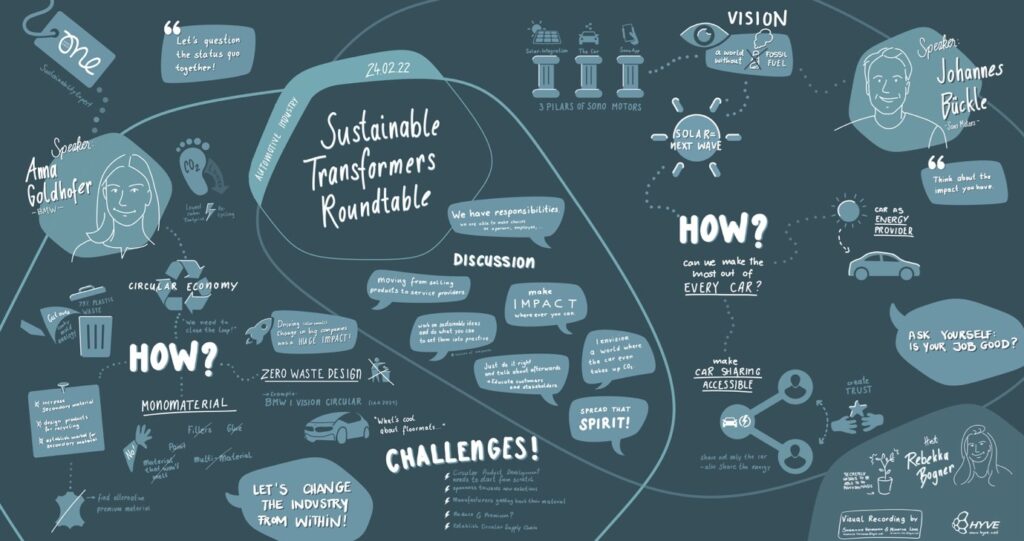
For an on-site event, an analog hand drawing on a large-scale poster is a great option:
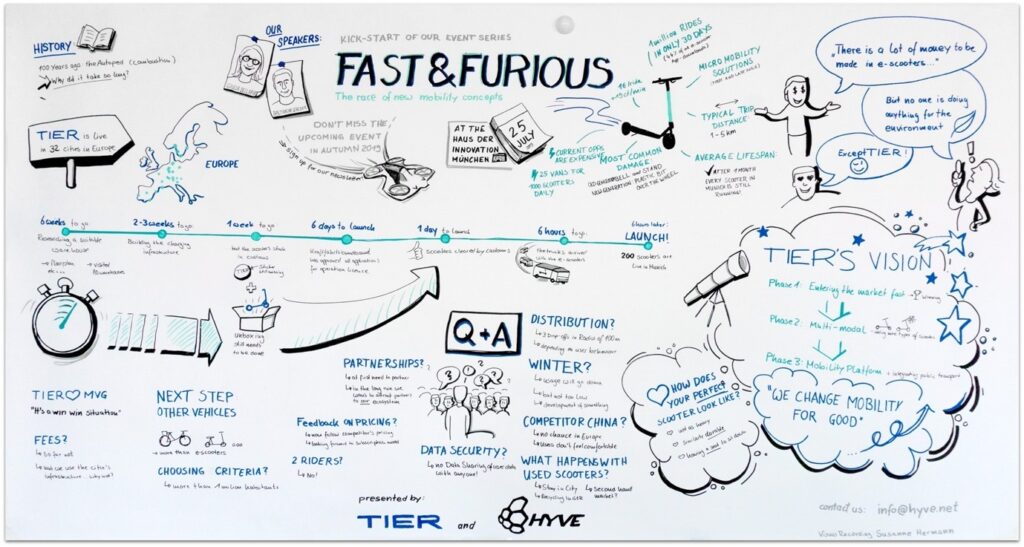
Application in practice
The use of visual recording offers many advantages: During an event, all participants can be picked up mentally. They have something to orient themselves on and discuss, are actively involved, and experience an appreciation of their ideas and thoughts. Thus, this method also helps to create a common understanding, to increase the engagement and motivation of the attendees.
Torsten Laass, from HAIX described it as follows after a workshop:
Pictures not only say more than 1000 words, but they also invite further exchange, reflection, innovation, and here and there also reinterpretation, especially within the team. Thus, with the support of visual recording, we have achieved 100% of what we want – entry into a sustainable learning culture.
Torsten Laass (HAIX)
Depending on the project, the requirements for a visual recording are different. When it comes to addressing different participants or summarizing content, the visual recorder usually participates passively in the event and creates an image that can then be shared with everyone.
But if the goal is, for example, to create a shared vision, our visual recorders step into the role of facilitators: they can use keywords and exchange with participants to create a kind of mission statement that not only serves as a basis for discussion during the session but is also used afterward as an important reference on which decisions can be made.
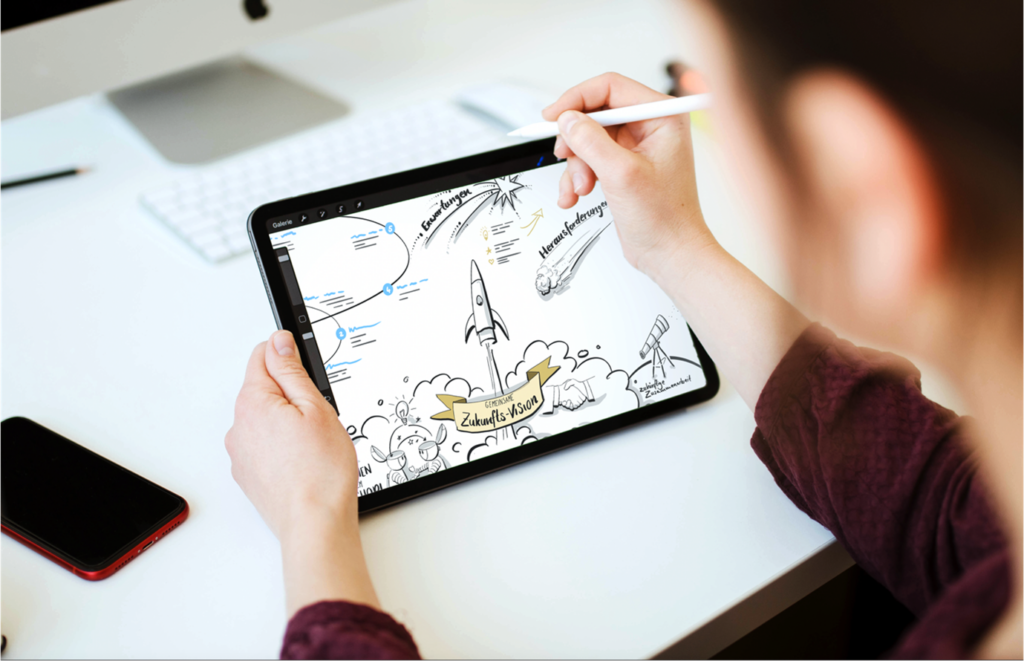
Afterward, HYVE’s designers are happy to digitally prepare the visual recording and have it printed as a high-quality poster or framed canvas, so that all workshop contents are always within reach in the project room, for example, or can simply be effectively staged to motivate all participants.
Visual Recording – a summary
But probably the best way to summarize the method is to do a little visual recording about itself:
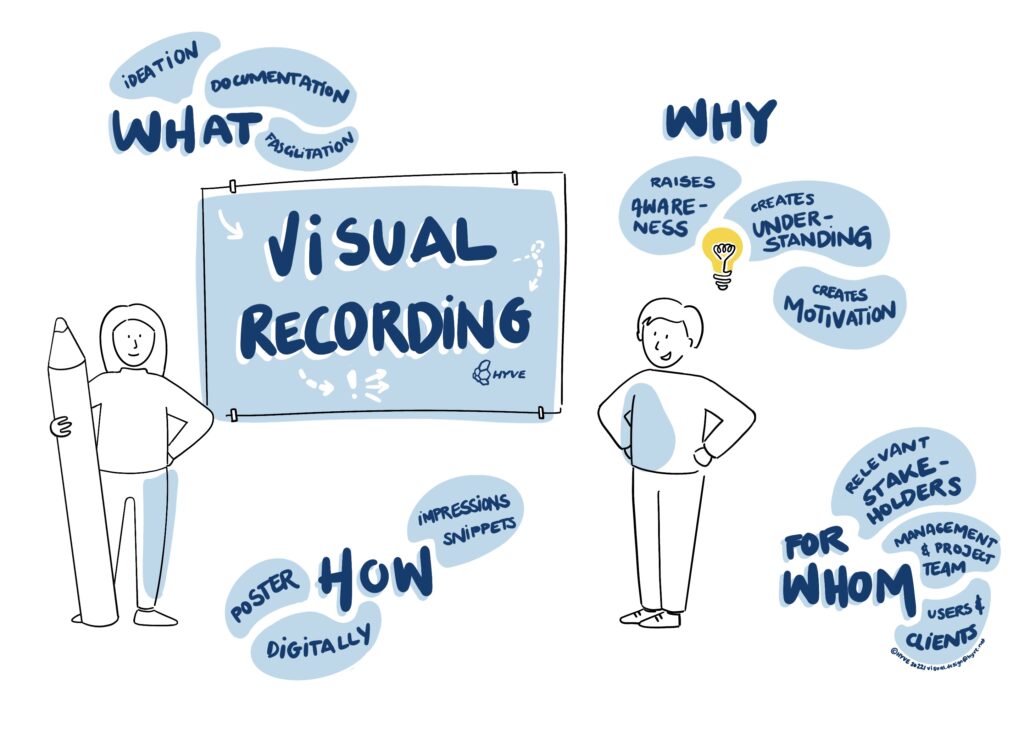
Visual recording can have many purposes: As a graphic summary and content pickup during a workshop, it can quickly bring participants back into a creative working mode. As documentation and look back after a session, it invites participants to take a short journey back in time to the main topics and conversations; it serves as a visual anchor and basis for discussion in presentations or as a concrete strategy image of a planning workshop. But no matter how it is used, we can say from our experience that a visual recording always generates enthusiasm and provides important “aha” moments long after an event.
Do you have questions about the method or would you now like to use Visual Recording for your workshop?
Our Visual Designers
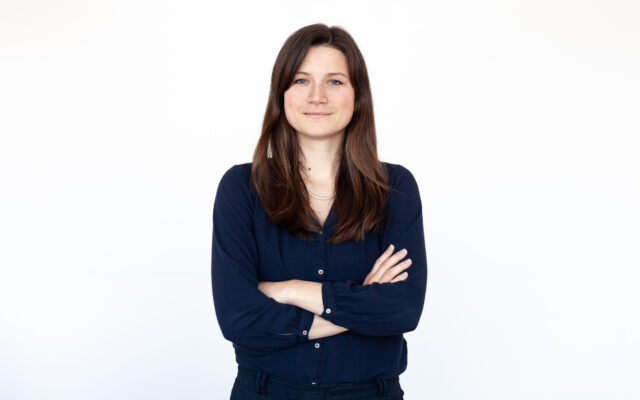
Susanne Hermann
HYVE
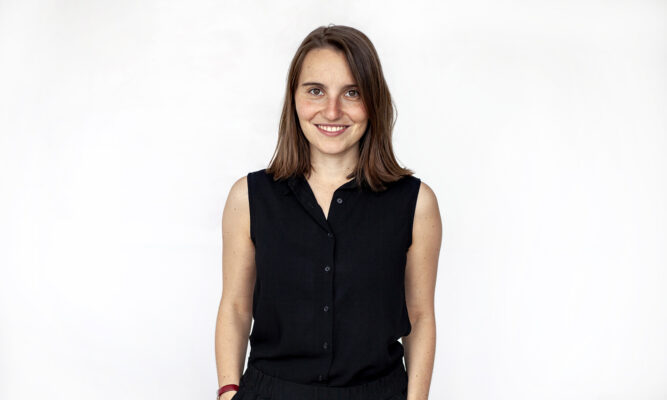
Minerva Loos
HYVE
